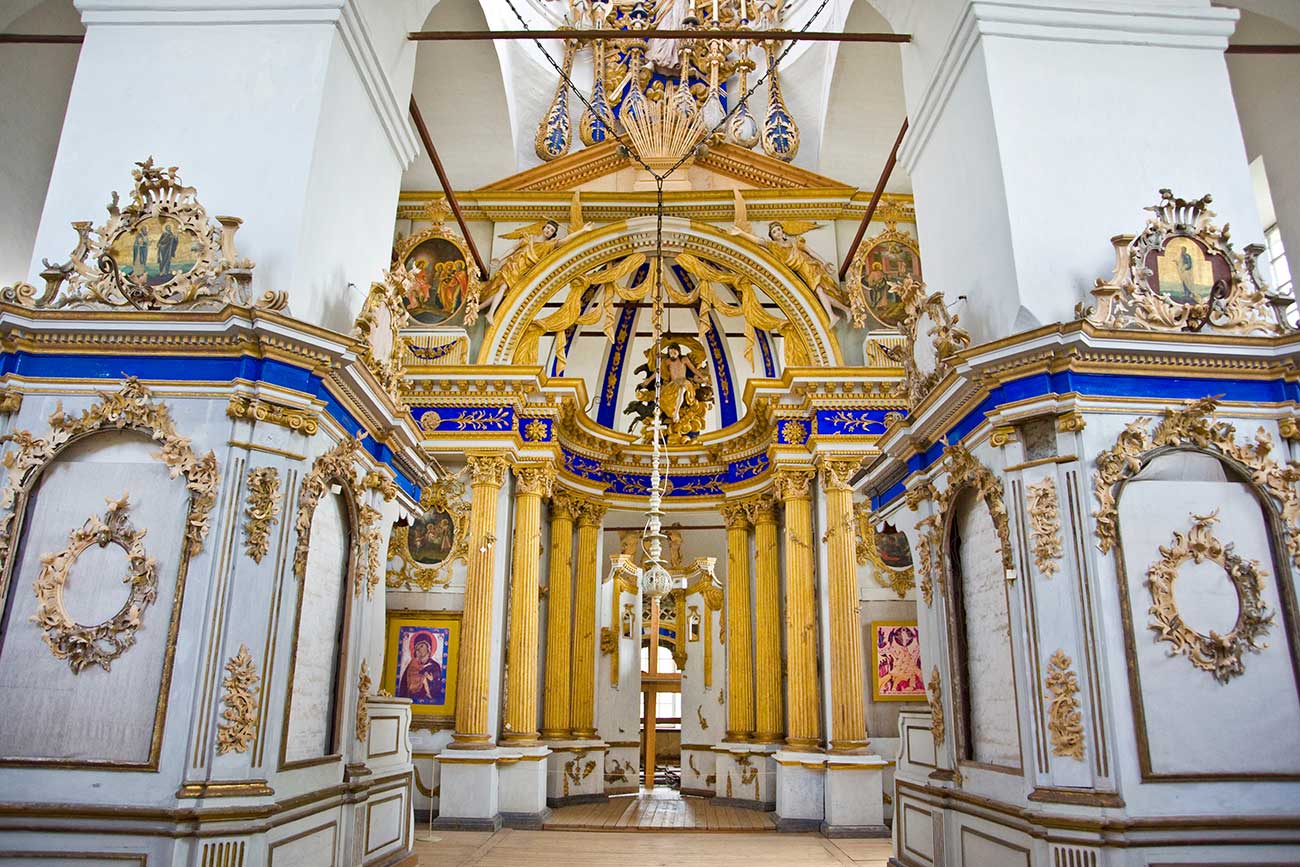
Transfiguration Cathedral, central piers & view east toward iconostasis.Photo was taken on Aug. 8, 2009.
William Brumfield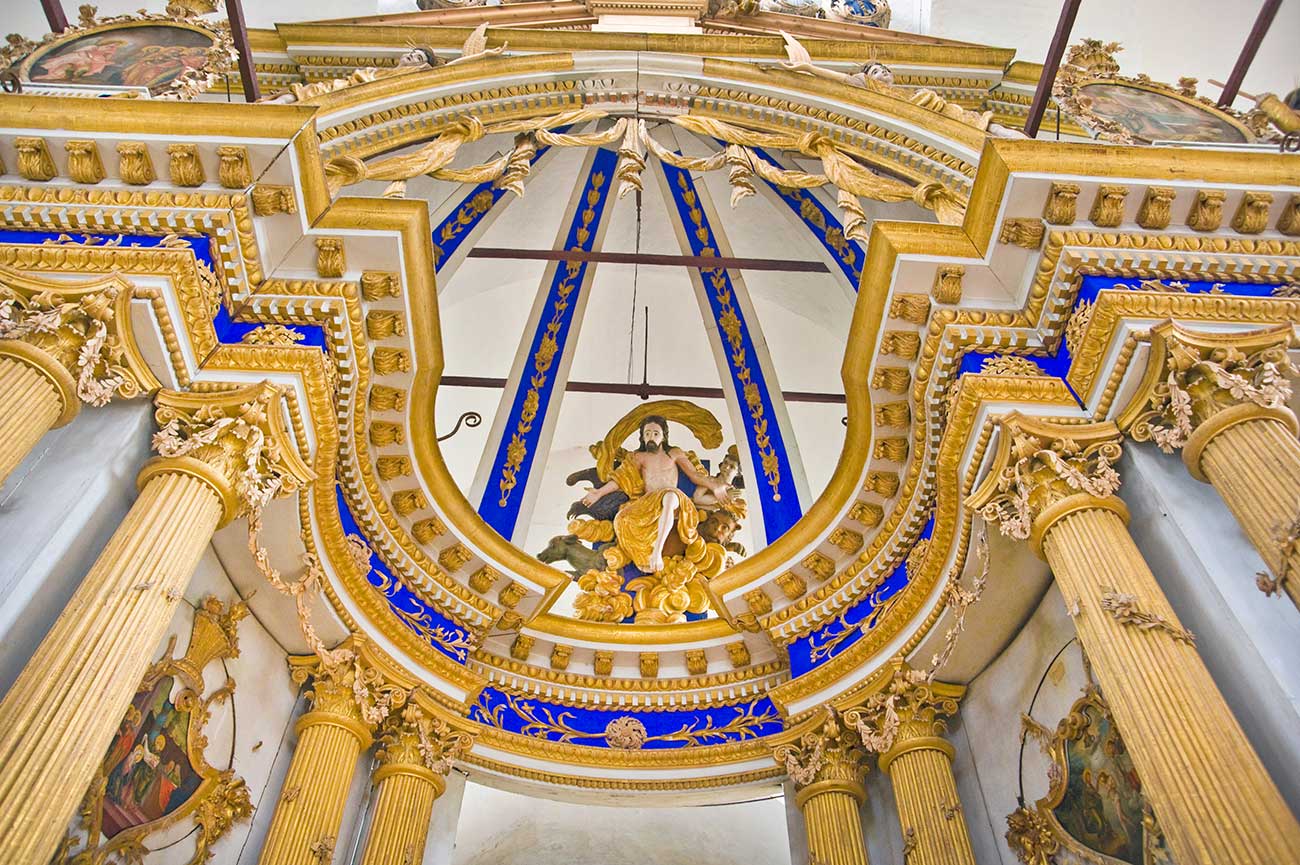 Belozersk Kremlin. Transfiguration Cathedral, iconostasis, sculpture of Christ with symbols of four Evangelists. August 8, 2009 / William Brumfield
Belozersk Kremlin. Transfiguration Cathedral, iconostasis, sculpture of Christ with symbols of four Evangelists. August 8, 2009 / William Brumfield
At the beginning of the 20th century the Russian chemist and photographer Sergei Prokudin-Gorsky invented a complex process for vivid, detailed color photography (see box text below). Inspired to use this new method to record the diversity of the Russian Empire, he photographed numerous historic sites during the decade before the abdication of Tsar Nicholas II in 1917.
Primary support for Prokudin-Gorsky’s project came from the Ministry of Transportation, which facilitated his photography along Russia’s rail and waterways. Particularly important for the ministry was the Mariinsky Waterway, which connected St. Petersburg with the Volga River Basin. In the summer of 1909, Prokudin-Gorsky traveled along this waterway and produced a rich collection of photographs. Among these treasures are his photographs of the small town of Belozersk, situated on the south shore of White Lake. Its two major landmarks are the Kremlin and the Cathedral of the Transfiguration of the Savior, begun in 1668 and completed in the late 1670s.
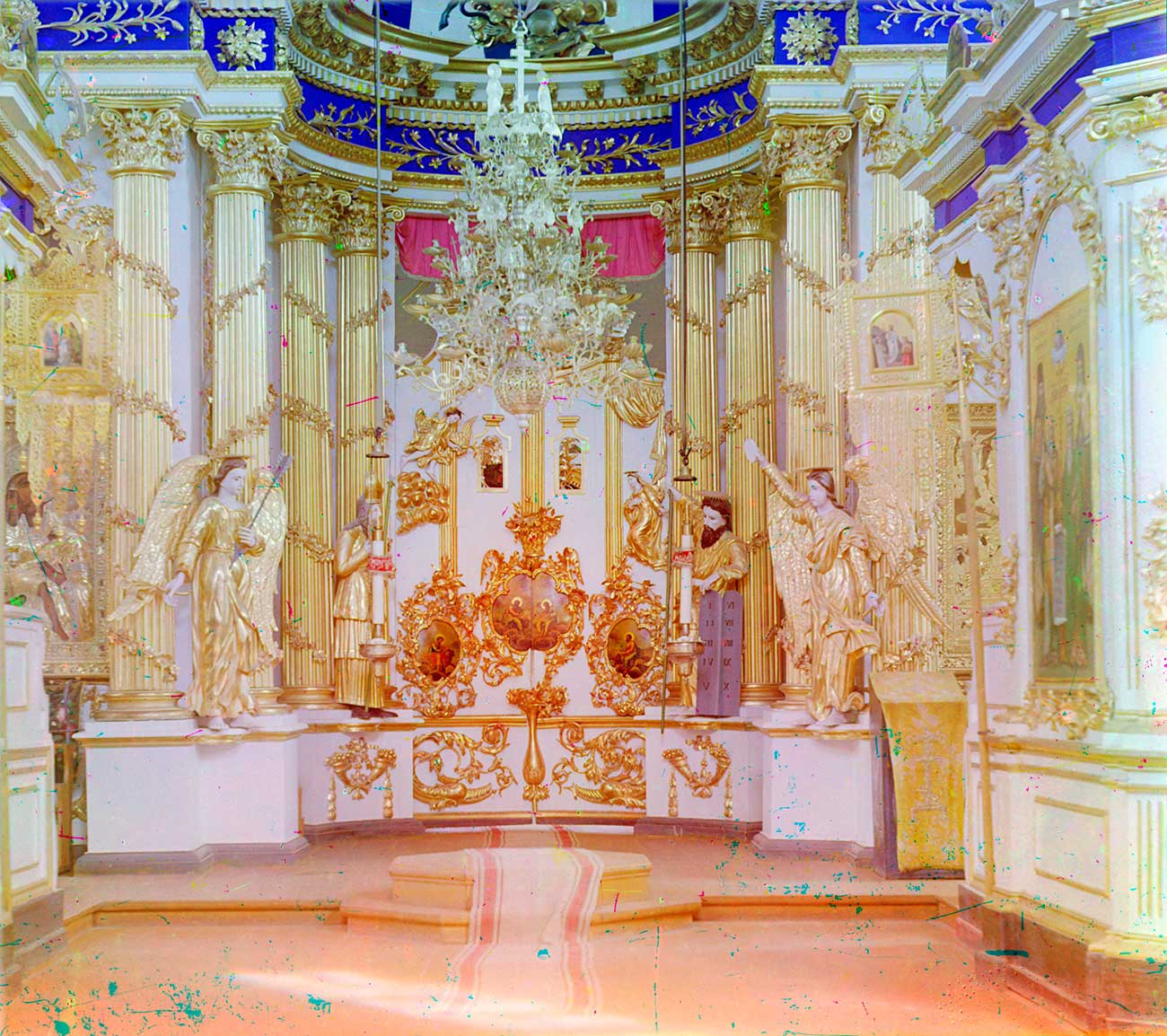 Transfiguration Cathedral, iconostasis, lower part with Royal Gate. Summer, 1909 / Sergei Prokudin-Gorsky
Transfiguration Cathedral, iconostasis, lower part with Royal Gate. Summer, 1909 / Sergei Prokudin-Gorsky
The cathedral interior was not painted with frescoes, which allows visitors to concentrate their attention on one of the most remarkable icon screens in Russia. The main space is defined by two massive square piers, faced on their lower level with carved, gilded icon frames. The piers support the west and central cathedral vaults and structure the view of the iconostasis.
The typical Russian Orthodox icon screen forms a grid of two dimensions for the ascending rows of icons, with the main portal to the altar—the Royal Gate—in the center. At the beginning of the 18th century, there appeared a more dynamic form of screen influenced by Baroque art. It emphasizes a greater sense of depth in the center surrounding the Royal Gate.
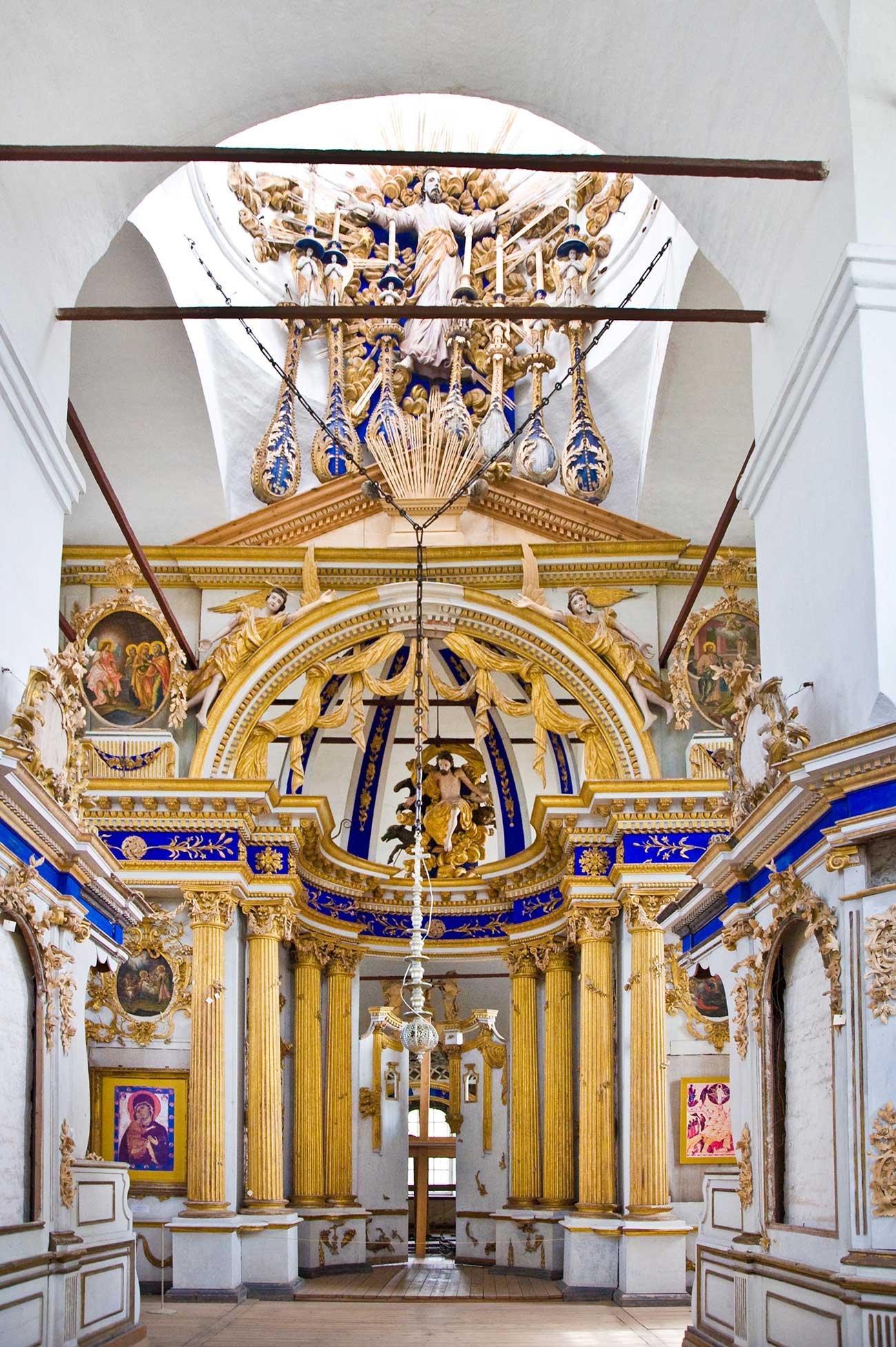 Transfiguration Cathedral, view east toward iconostasis with remnants of Royal Gate. August, 2009 / William Brumfield
Transfiguration Cathedral, view east toward iconostasis with remnants of Royal Gate. August, 2009 / William Brumfield
The icon screen at the Belozersk Transfiguration Cathedral shares this characteristic although it was created decades after the waning of the Baroque, perhaps at the beginning of the 19th century. This icon scree represents a stunning merger of the Baroque and neoclassical styles, a synergy of vigorous northern wooden carving with refined elements characteristic of St. Petersburg.
 Transfiguration Cathedral, central piers & view east toward iconostasis. August, 2009 / William Brumfield
Transfiguration Cathedral, central piers & view east toward iconostasis. August, 2009 / William Brumfield
The channeled column shafts and the elaborate Corinthian entablature, as well as sinuous decorative baroque figures, are highlighted in gold on a white background. Angels and cherubim occupy the flanks of the structure and guard its center. Despite the loss of certain elements during the Soviet period, the iconostasis is relatively well preserved, and Prokudin-Gorsky’s valuable photograph allows a precise reconstruction of its original form.
On the first level, the corners of the central space are occupied by statues of angels. Beyond these, the eye discerns the curved walls leading to the Royal Gate. The original design had statues of Moses holding the Tablets of the Ten Commandments, and his brother Aaron with his miraculous rod, placed opposite one another on the curved walls. These two statues in a literal sense prefigure the painted cartouches originally present on the two halves of the Royal Gate: the four Evangelists, the Annunciation and the Last Supper.
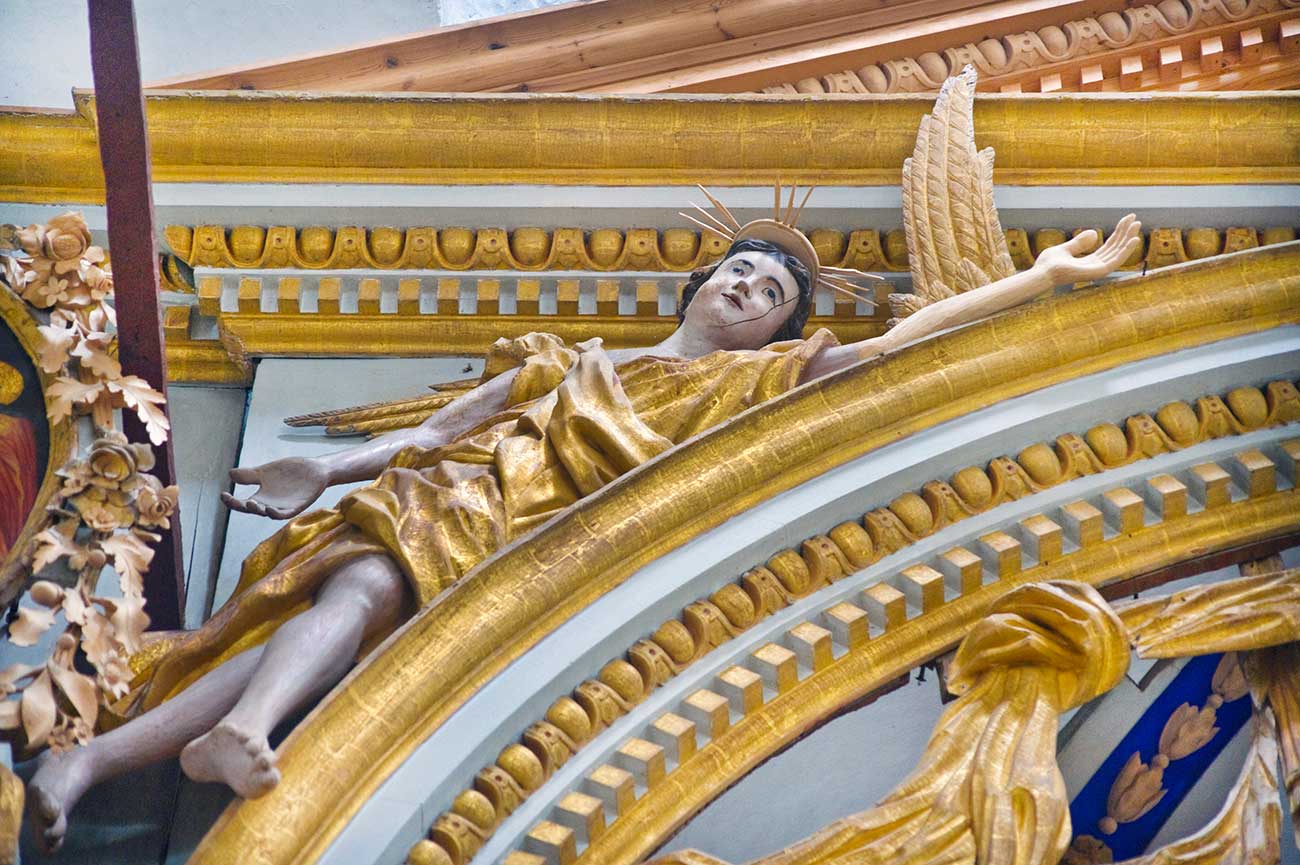 Transfiguration Cathedral, angel above iconostasis arch. August, 2009 / William Brumfield
Transfiguration Cathedral, angel above iconostasis arch. August, 2009 / William Brumfield
Prokudin-Gorsky, for whatever technical reason, photographed only the lower tier. Moving toward the center of the wooden construction, which is lit from above by the main cathedral dome, the three-dimensional drama of the central space becomes evident through the placement of an array of sculpted figures seen in my photographs. The frame for the Royal Gate ascends to a massive entablature (gold on white, with a deep blue horizontal border), on which rests the shell of a dome formed by a hemispherical section with ribs in the background and gilded draped bunting in the foreground.
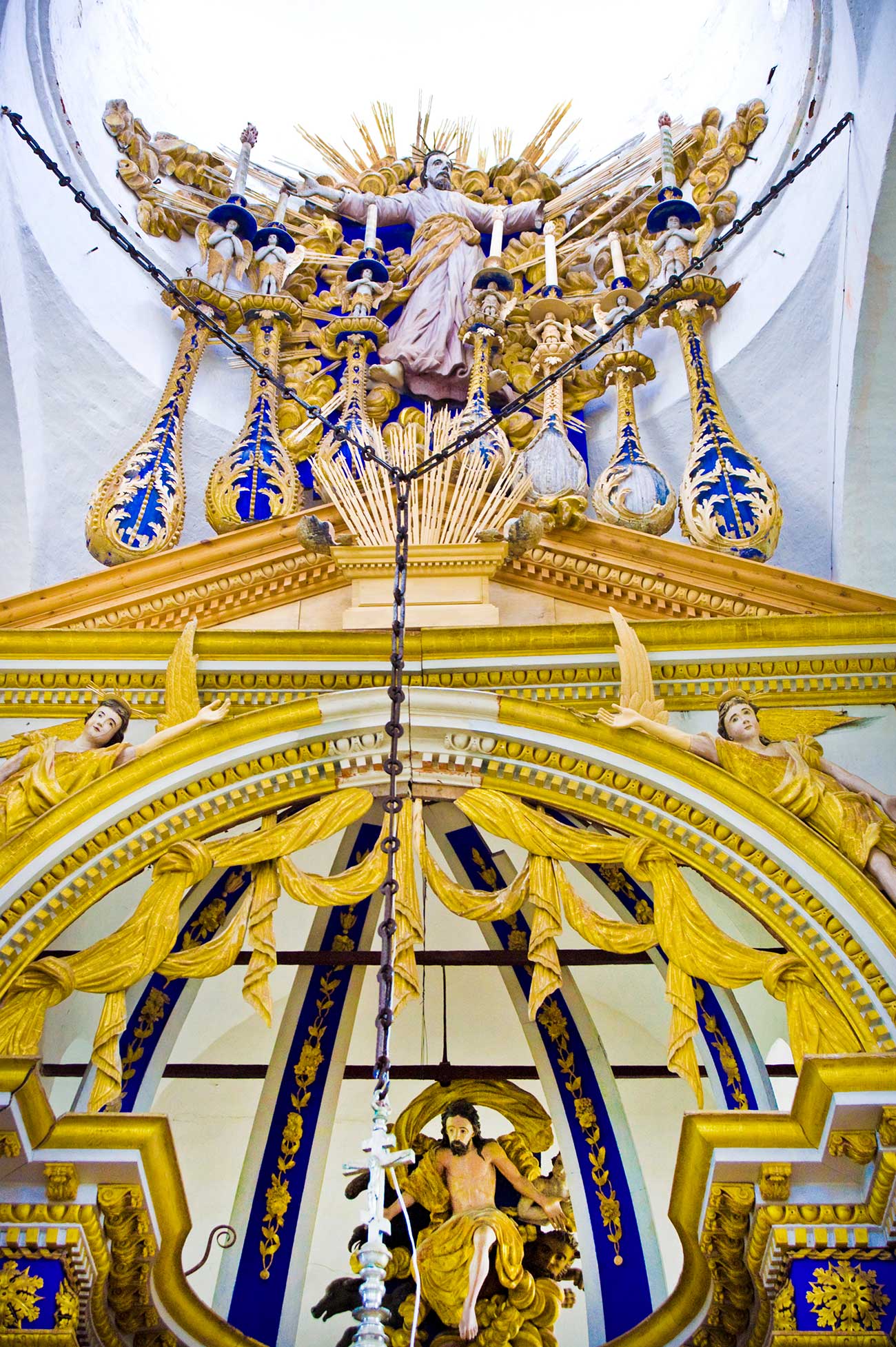 Transfiguration Cathedral, iconostasis upper part, Christ with symbols of Evangelists & Christ ascendant. Photo: August, 2009 / William Brumfield
Transfiguration Cathedral, iconostasis upper part, Christ with symbols of Evangelists & Christ ascendant. Photo: August, 2009 / William Brumfield
This dramatic display envelops a sculpted figure of Christ clad in a loincloth and ascending to heaven in a cloud of glory. On either side of Christ are the four symbols of the Evangelists: the lion of St. Mark, the angel of St. Mathew, the eagle of St. John and the flying bull of St. Luke. At the very top of the iconostasis, ascending into the drum under the main dome, is another sculpted figure of Christ resurrected, in a glorious aura with angels, rays of light and massive candles — all associated with the Apocalypse.
 Transfiguration Cathedral, iconostasis upper part, sculpture of Christ ascendant. August 8, 2009 / William Brumfield
Transfiguration Cathedral, iconostasis upper part, sculpture of Christ ascendant. August 8, 2009 / William Brumfield
On the top ledge at either side of the iconostasis are more figures of angels (with trumpets of the Last Judgement), the angel holding the Book with Seven Seals, the seven candles of the Apocalypse and paintings of the miracles of Christ in cartouches formed of carved wood in a foliate pattern. The faces of the angels have a naïve sweetness characteristic of provincial art. Although the Orthodox Church generally frowned on fully sculpted figures in church art, these statues continue a distinctive tradition of wooden carving throughout the Russian North. Together with its stylistic exuberance, the structure and the theological significance of the Transfiguration Cathedral icon screen are among the richest in Russia.
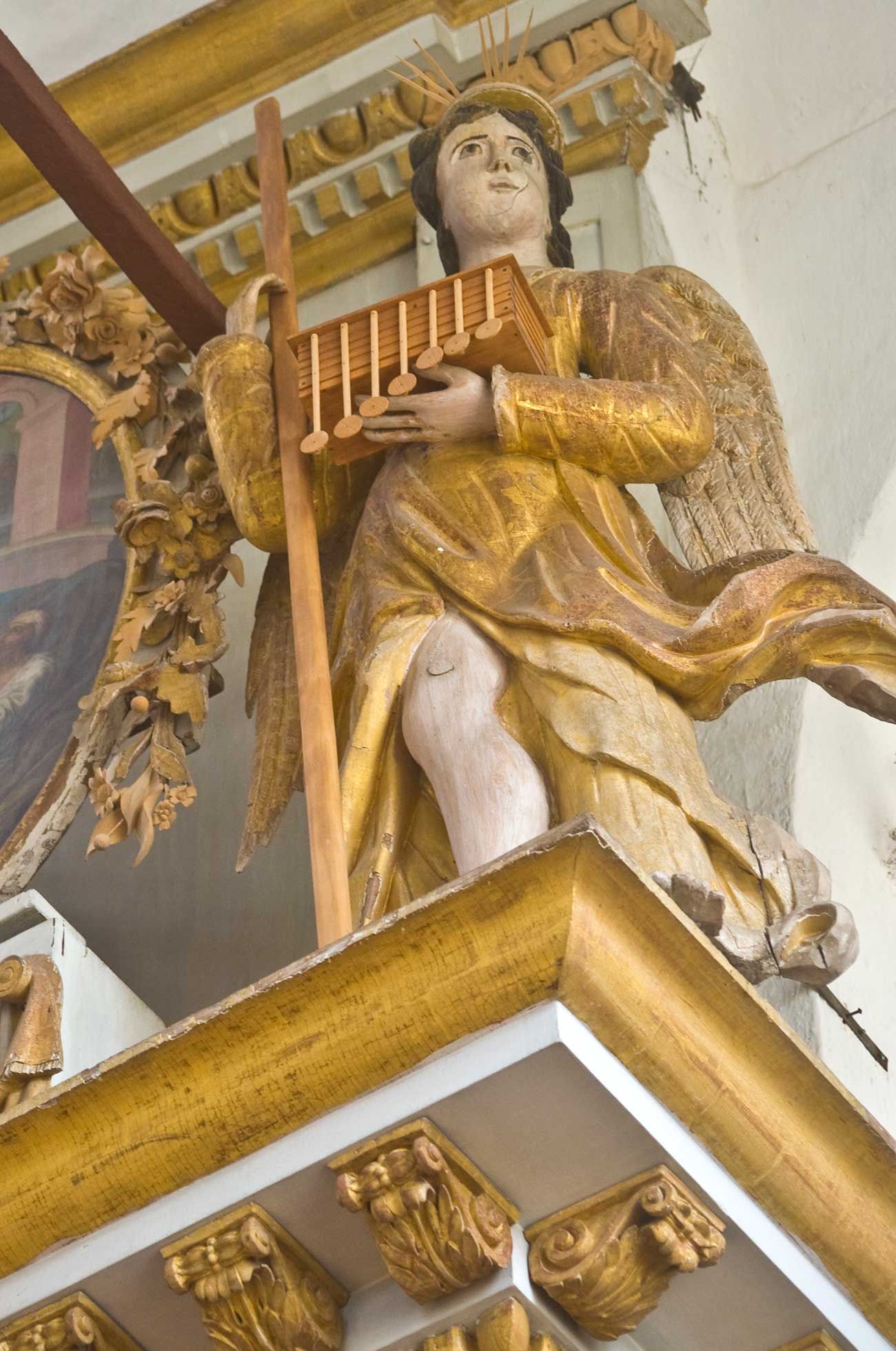 Transfiguration Cathedral, iconostasis upper level, angel holding the Book with Seven Seals. August, 2009 / William Brumfield
Transfiguration Cathedral, iconostasis upper level, angel holding the Book with Seven Seals. August, 2009 / William Brumfield
Read more:The Medieval Fortress of Belozersk: From Prokudin-Gorsky to the present
If using any of Russia Beyond's content, partly or in full, always provide an active hyperlink to the original material.
Subscribe
to our newsletter!
Get the week's best stories straight to your inbox